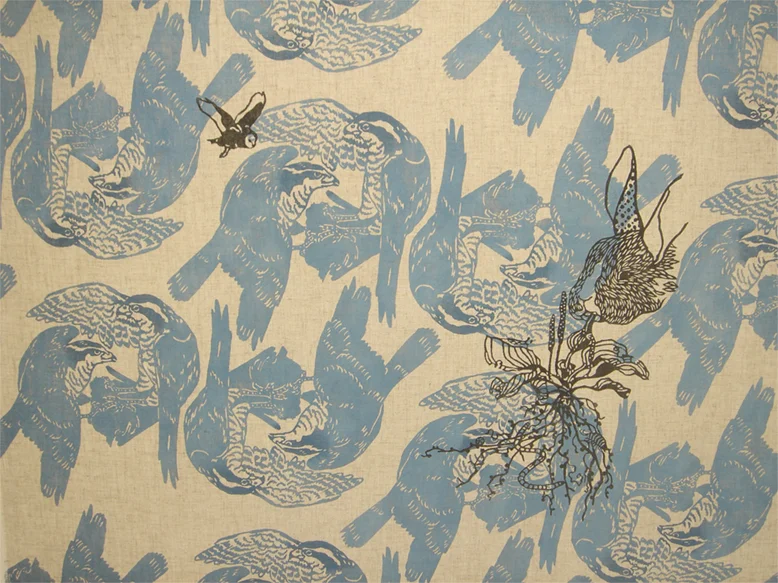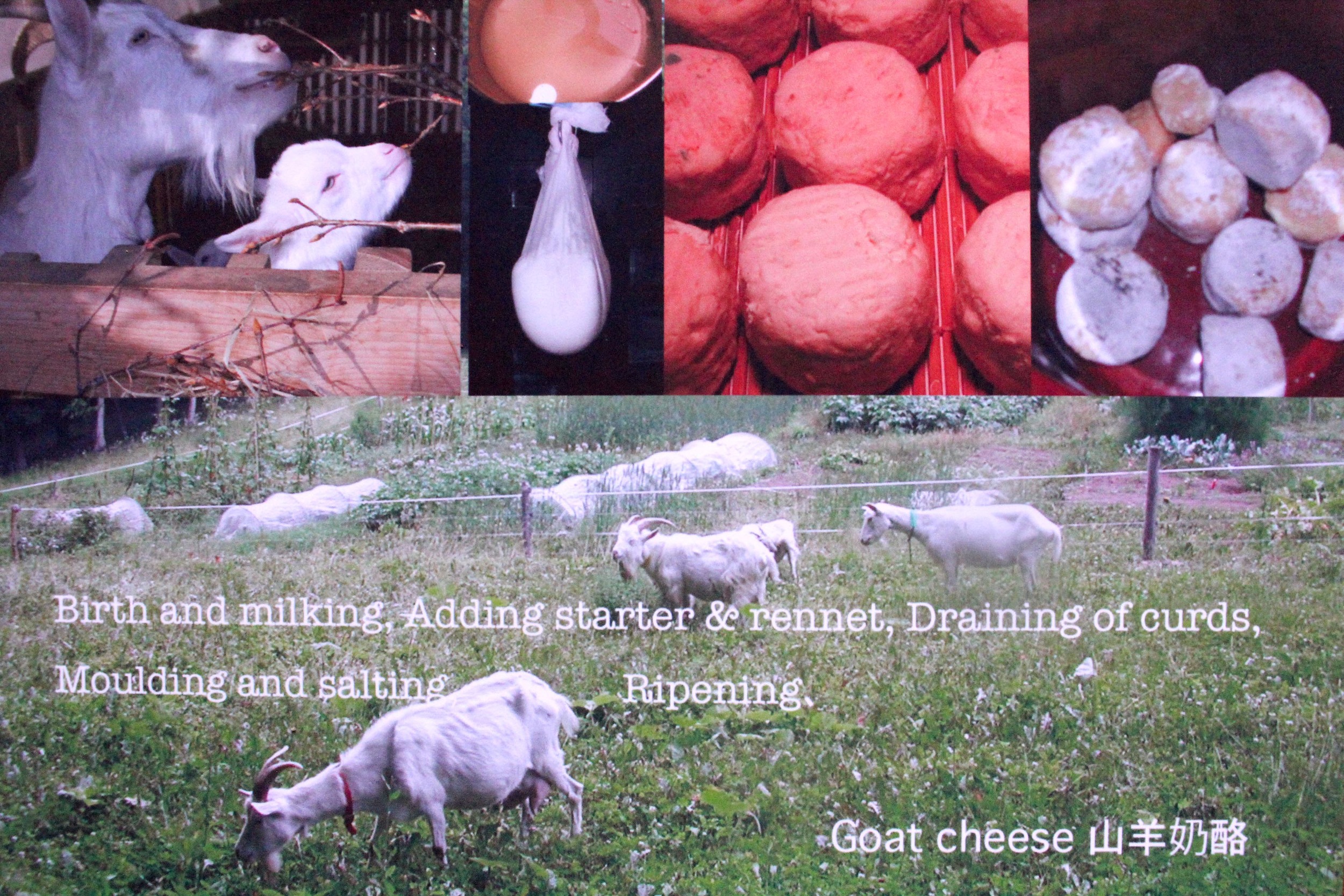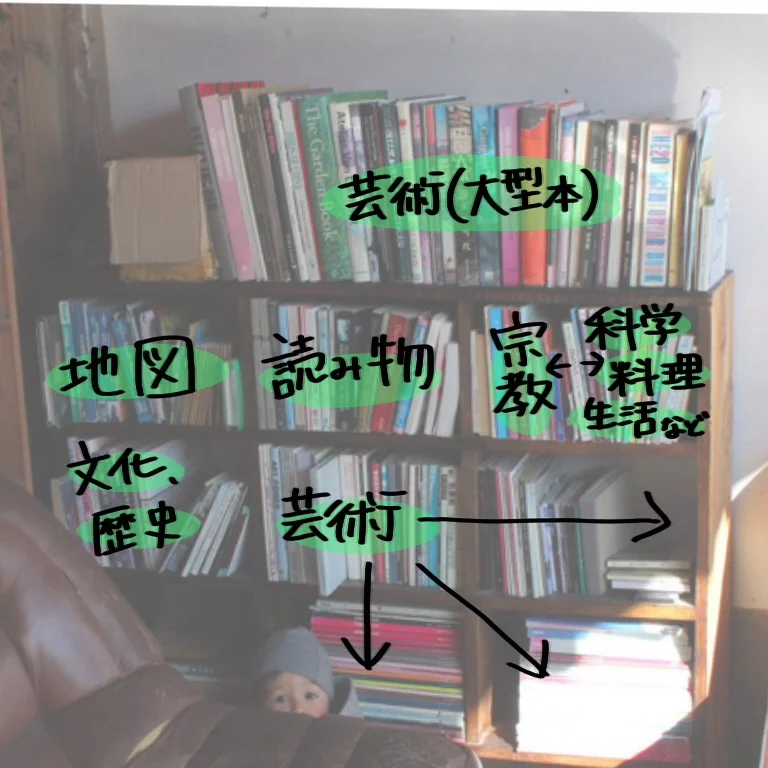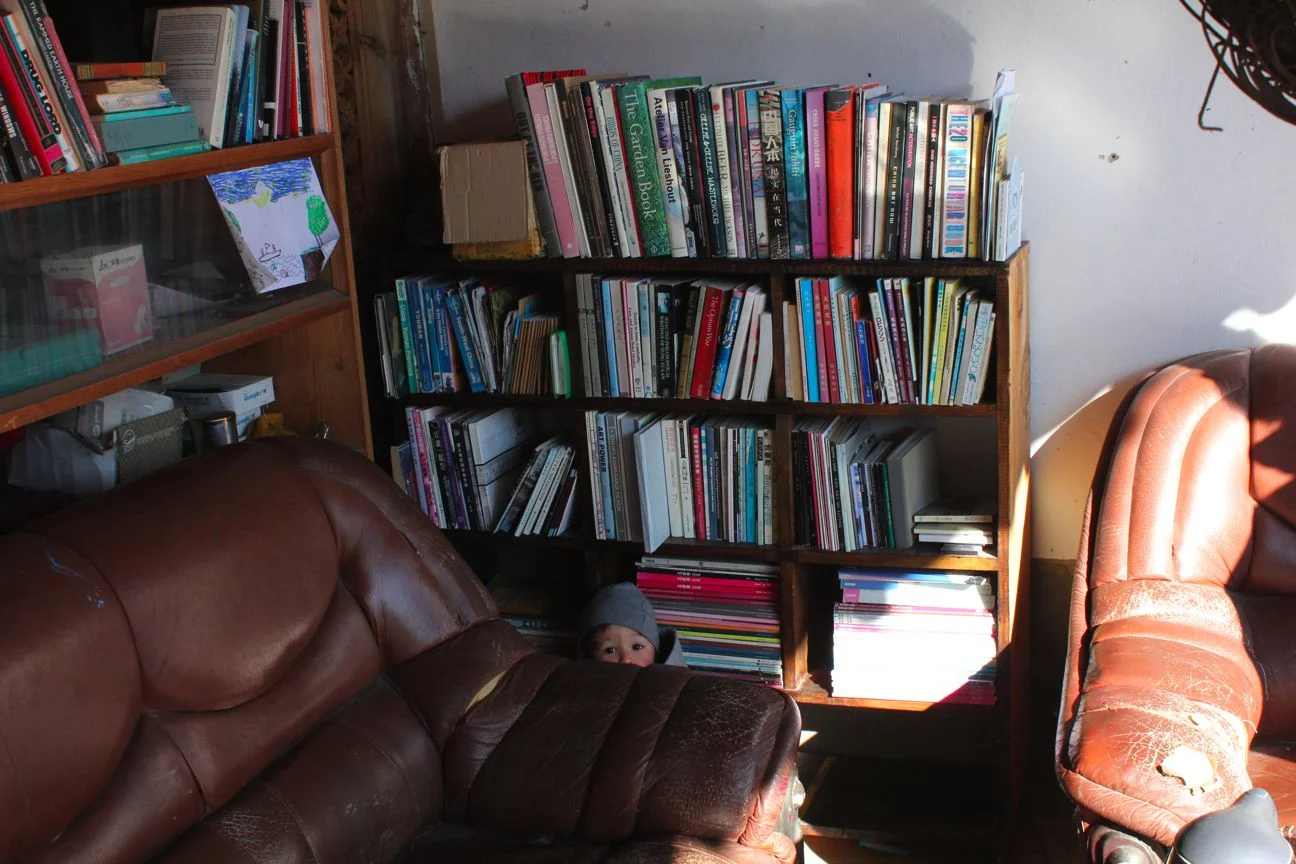hokkaido new farmers 北海道新农民团
hokkaido new farmer study tour 20140128-0210
I invited my farming life teachers; Six New Farmers from Hokkaido, Japan to observe and participate in the farming life of Lashihai, including traditional ceremonies, animal slaughtering and living together with animals. These practices had died out with the growth of material wealth brought with economic development, even in the Japanese countryside. Here in Lashihai, we were all excited about traditional practices, but at the same time, we recognize it as a time of change and shift in this culture, again coinciding with the economic growth of China. We will bring back what we learned to Hokkaido to develop some work together with Lijiang studio this summer... on going research practice of global new farmers. More soon
Mai Takahashi
高桥舞
运用冲绳的传统印染工艺“红型”技法来表现。雪乡、大自然、自给自足的生活给了他丰富的创作源泉,以长期对大自然中动植物的细致观察为原型,设计雕刻出印染模版,近来致力于将水彩模板技法融入染色中的研究。
“红型” 一种传统的手工染色工艺。十八世纪流传于日本本土以南的岛屿--冲绳的传统印染工艺。当时主要用于王室贵族的礼服面料。"红型"指的是一种染的手法。"红"在日文里是彩色之意,也就是多采多姿,其用色大胆艳丽。 “型染”工艺:使用型纸镂刻花纹图案,再将刻制完成的型版覆于染布上,并于其上刮印防染糊,待所刮印的糊料干固后即成为防染层,再将染布浸染染料,染后除去糊料,现出图底明显的传统图案和鲜艳的色彩。
Mai Takahashi
Her work is expressed with Bingata; the Okinawan traditional dyeing technique. She lives and works in nature and grows vegetables; which gives her inspiration for designing motifs for her paper patterns by close observation of plants and animals. Currently she is researching and working on stencil techniques.
"Bingata" is the resist dyeing technique characterized by the use of a traditional designed paper pattern and vivid colors. It was developed in 18th century Okinawa; a Southern island chain far away from the Japanese mainland. At the time, the fabric was used for the costumes of royalty and aristocracy. Resist glue is made with glutinous rice and bran.
高橋舞
沖縄の伝統工芸である「紅型」という染色技法を使い表現している。雪が多く自然豊かな土地で自分で食べる野菜など育てながら生活しつつ動植物を中心に自然のようすを日々観察し考えたことをモチーフに模様をデザインして型紙を彫って布に染めている。最近はステンシルの技法での染色も研究している。
「紅型(びんがた)」とは 十八世紀頃から日本本土より遥か南の島である沖縄で発達した型染めの技法。当時は主に、王族や貴族の衣装だった。型紙を使い、餅米とぬかでできた糊で防染し伝統的な模様を色鮮やかに染め上げる。
Takuma Seiji
清治拓真
1974年出生。我从事雕刻,完成的作品不是很多。对于如何思考去完成雕刻作品,我至今还没有找到恰当的词汇去表达。即使如此,我的头脑中经常会碰到二个以上的东西在核心上的不同的场景。雕刻所使用的材料随着好点子的不同而使用适合它的材料,所以,使用的素材各有不同。作品的大小也随着想法不同来决定,这样就不受制作环境和设置空间的制约。我搬家了。到那时为止只有在都市生活的我有了移住的机会,我立刻决定搬家。三年多了,这期间与那里的人们相处的同时,听村落里了解过去的人们讲过去的事情,与他们共同进行地域史的整理修补工作。
Takuma Seiji
I make sculptures, though I haven't finished so many. As yet, I have no better words to explain the concept of sculpture. However, I often find myself coming across the crucial moment of difference between more than 2 things. Different materials are chosen for each approach to sculpture. The sizes also vary, though often limited by the working environment and the installation spaces.
I moved. I had an opportunity to live in the countryside, so I decided to go for it, as up to that point I had only lived in the big city. Through communication and meetings with locals in the past three years, I have been working on the editorial process of existing local history in collaboration with several other people —a process of listening to the old knowledge.
清治拓真
わたしは彫刻を作っています。仕上げた数は決して多くありません。どのような考えで彫刻を拵えているのか明らかにできる言葉をまだ持ち合わせていません。 それでも、2つ以上のものの間の違いを肝要とする場面によく出会います。彫刻に使う材料はその都度アイデアに合うものを見つくろうので、扱う素材はさまざ まです。大きさについても基本的にアイデアとのマッチングを考慮して決めるのですが、制作環境や設置空間に制約されることも少なくありません。
わたしは引っ越しました。それまで都市部でしか暮らしことのないわたしは農村へ移り住む機会を得て、ほどなく転居を決めました。三年余り経ちます。そのあ いだに知り合った人たちと関わりながら、この集落の昔を知る人たちの話に耳を傾け、既にある地域史を補う作業に複数名共同で取り組んでいます。
Nagata Masayuki
永田勝之
1952年生于北海道。东京的大学建筑专业毕业。1974年参加消费者自给农场运动“蛋之会”,作为农场建设的工作人员,担当家畜的饲养工作5年。以后到东京一家设计事务所工作。1984年回到北海道。建筑家。以札幌的“へり”为主要地点,在既非城市又非农村的地方愉快地生活。主办“讲座·农村生活课程”的“NPO青鸟”的负责人。主要以我和除家族成员以外的人员构成,为此我对开辟场所维持形态很感兴趣。
日本近来伴随经济成长,身边的、构成社会最小单位的人们的生活发生了急剧的变化。有很多为变得富裕了而欣喜的人们,这种表面现象占社会的主流。但如果变个角度看的话,包括一般市民任何一个当事者都会证实,这个时代已经走向不负责任的歇斯底里状态的危险边缘。我已经接受了这个现实。特别是2011年发生的“东日本大地震·核泄露”,包括灾后,非常遗憾的表现出“可怕、贫穷”的最突出的特征。如果勉强说的话,从那种富足脱离开来寻求一种不同意义的丰富生活,也就是说要把对生活的思考变成具体的行动非常必要,那里有很多要素,手法也很必要,这是浅吟低唱的“温故知新”吧。
Masayuki Nagata
1952, colony of Japan! I was born and raised in Hokkaido. I studied architecture at the University of Tokyo. Then enrolled five years on a farm as such in charge of livestock breeding in 1974, participated in the launch "meeting of the egg (consumer self-sufficiency farm movement)" and, also, as the staff of the farm construction. Then, through a design office work of Tokyo, 1984, moved to Hokkaido independence. Architect: set the base of Sapporo (population 2 million) to the "edge". I've been living and amused in the region nor in the countryside in the city. And run the "lessons of the course, No-teki living" "NPO Blue Bird" presided over. Are interested in a form to create and maintain a work in personnel structure, including the family other than your own or your own, and a place for that. With the economic growth of recent years, we have spread rapid transformation (family, community) life of the unit as a component of society especially people's lives is strong in a familiar place in Japan. People and rejoice "become rich" is also said to be the mainstream of society On the surface, it is many. But depending on how you look at it, it is a very dangerous era (toward the cliff) to rip hysterically anyone of the parties not responsible (involving the members front of the society), including such general public been demonstrated I am perceived to be, I think including the support of then, took place in 2011 , particularly "the Great East Japan Earthquake, nuclear accident" and has become a symbol "poor - terrible" state-of-the-art unfortunately.
I think we, and are under pressure to take action specific to continue to devise and Configuration their own personal belongings = living units seek richness from the richness and "down" a little bit different if you dare say. Shi method there are various factors that is also what is needed there, I feel that kana "taking a lesson from the past" has been as a basso continuo.
永田まさゆき
1952年、日本の植民地!北海道で生まれ育つ。東京の大学で建築を学ぶ。1974年、「たまごの会(消費者自給農場運動)」の立ち上げに参加、農場建設のスタッフとして、また家畜の飼育担当などとして農場に5年在籍。その後、東京の設計事務所勤務を経、1984年、北海道に移り独立。建築家。札幌市(人口200万人)の「へり」に拠点を設定。都市でも田舎でもない地域でおもしろがって生活をしてきた。「講座・農的くらしのレッスン」を運営する「NPOあおいとり」主宰。自分、あるいは自分の家族以外を含めた人員構成で活動をする、そのための場所をつくり維持する形態に興味がある。
日本では近年の経済成長に伴い、身近なところでは人々の生活とりわけ社会の構成要素としての生活単位(家族、地域)の急激な変容が強いられ普及しました。「豊かになった」と喜ぶ人々も多くそれが表面的には社会の主流と言えます。しかし見方を変えれば、そういった一般市民を含め当事者の誰もが(社会の構成員ぜんぶを巻き込んで)責任を負わずヒステリックに(崖に向かって)突っ走るたいへん危険な時代であることが実証されている、とわたしは受け止めています。とくに2011年に起こった「東日本大震災・原発事故」はその後の対応を含め、残念ながら「恐ろしい・貧しい」最先端の象徴となっていると思います。わたしたちは、あえて言えばその豊かさから「降りて」少し違う豊かさを求める身の回り=生活単位を自ら考案・構成していく具体的な行動を起こす必要にせまられていると思います。そこには多様な要素があるし手法も必要とされるのですが、通奏低音としては「温故知新」かなという気がしています。
永田温子
我们每个人大概毫无遗漏地是父母的期待和自己的志向选择了大学,来到了东京。但是,随着时间的流逝,享受东京的繁华已过,如果没有上升的志向,没有勤勉努力的人格,陷入狭窄的土地房屋和拥挤的人群中,以有无金钱来衡量人的价值的大都市如何培养孩子们呢?为此我离开了东京。另一方面,我个人认为,1973年到74年间的日本第一次石油冲击让我觉醒,开始重新思考“一次性”时代的问题。饮食质量低下的社会问题的出现,开始质问社会的整体富裕。就在那时参加了成立 “蛋之会”的农场建设工作,与同行一起愉快地在田间劳作以及体会实践加工作业的快乐。
北海道·札幌是我的故乡,是我原本的生活。这是一种理念,无论与泥土打交道的多么繁重的劳动,都不会产生副作用。为了这样的生活所必需的劳作是我自己的选择,这就是所说的意义。根本的原因是不希望强迫谁,也不希望被谁强迫。正因为如此,我是冲着原本的农村生活而来。以往就看到那样的生活好像很愉快,所以有了这样的选择,实际参与了以后除了感到愉快有意思以外,感受最多的还是觉得“这样的生活很奢侈”。从东京时代开始已经过了40年,10年前开了一家“山羊屋”的咖啡店,主要使用自己种植的农作物。特别是准备以在札幌的实践、愉快的劳作为主题绘制明信片,还有做“山羊奶酪”、织“羊毛毛衣”、猪肉加工、炭火烘制面包等等。
Haruko Nagata
Among good company, the University of Tokyo-oriented to their own values and heritage. Before long, but past the age to be able to enjoy the pomp of Tokyo, as long as it is not a personality that can make an effort every day keenness upward mobility sticks to the body, big city the value of a human being scaled without the crowds and land and houses, the narrow money in and to their children? Left Tokyo for these main reasons. On the other hand, personally, waking up to the first oil shock in Japan in 1973-4, beginning to rethink the disposable era, reduced quality of food became a social problem and led me to begin rethinking the quality of richness in society as a whole. Was born at that time, you can participate in farm construction "meeting of egg", and was enjoying the practice and process of making a crop in the field with my peers. In Hokkaido / Sapporo, my motto is "living life-size". Meaning enough say even for a ideological, himself, and do not toll of somewhere, someone a lot of work such as dirty, labor required for living. I think there is at the bottom, you do not want to suppress anyone, and let alone that do not want to be suppressed by anyone. That is why, basically came to the "agricultural basis living". The Often, it looks so happily, it's interesting and fun, but in fact, it is envy as "luxury living" in many cases. Roughly 40 years From a Tokyo era. Open the "or goat" café 10 years ago, I have been utilizing the agriculture-specific products.
In Yunnan we can distribute picture postcards of our work practice in Sapporo in particular, such as;
- goat cheese making
- wool sweater making
- processing of pork
- use of wheat: and bread baked in wood-fired kettle
- whole picture and goats
永田温子
ご多分に漏れず、親の価値観や自分の志向で大学は東京へ。しかし、やがて、東京の華やかさを楽しめる年齢を過ぎると、上昇志向が身に付いていて日々努力勉励できる人格でない限りは、狭い土地家屋や人ごみ、お金の有る無しで人の価値が計られる大都会で子育てするの?などが主な理由で東京を離れる。一方、個人的には、1973~4年の日本での第一次石油ショック時に目覚めて、使い捨て時代を考え直し始めていたり、食べ物の質低下が社会問題化してきており、社会全体が豊かさの質を問い直し始めていた。その時期に誕生した、”たまごの会”農場建設に参加したり、仲間と畑で作物を作ったり加工したりの実践を楽しんでいた。北海道/札幌では、自分のモットーは、”等身大の暮らし”ということ。理念的にではあっても、汚いとか大変な労働をどこかの、だれかにしわ寄せしない、暮らしに必要な労働はみずからがやる、というほどの意味。底には、誰をも抑圧したくないし、ましてや誰にも抑圧されたくないという思いがある。
というわけで、基本的に”農的くらし”をして来た。往々にして、楽しそうに見えるので、実際楽しくて面白いのだけれど、“贅沢な暮らし”と羨ましがられる事が多い。東京時代からするとざっと40年ほど。10年前からはカフェ”やぎや”を開き、農的産物を活用している。特に札幌で実践、楽しんでいたりする作業を絵はがき化してお配りする予定です。それらは、
●山羊チーズ作り●羊毛セーター作り●豚肉の加工●麦の利用:薪がま焼きのパンなど●やぎや全貌
下岛亘
出生在日本的首都东京,但讨厌东京。在北海道的大学学习农业。搬到北海道农村兰越町从事有机无农药栽培工作。在全国有连锁店的餐厅推广使用有机农作物。为此开设了实验农场并担任厂长职务。担任为城市人教授自给自足生活方式的学校“农村生活讲座”的讲师。“硫酸山自然再生项目”的主持。我擅长培育各种各样的有机无农药蔬菜。我非常喜欢农业。非常喜欢山、森林、植物。非常喜欢农村生活。我和女儿期待第一次的中国、第一次的云南。
Wataru Shimojima
Grew up in Tokyo, the capital of Japan (i don't like tokyo) Learned agriculture at the University in Hokkaido. Moved to the country side of Hokkaido called town Rankoshi, started organic non chemical agriculture.
Farming research leader of an experimental organic farm of a large restaurant chain for a while.
Lectured at the farming lessons at a school teaching self sufficient life for city people. Director of "Re-establish the acidic mountain" nature project.
I am good at growing different types of vegetable with organic non chemical
farming. I love agricultural work, mountains, forests and plants as well
as living in the countryside. I am looking forward to visit Yunnan, China;
it is my daughter's and my first trip to China.
下島 亘
日本の首都 東京で育つ。(東京は嫌い。) 北海道の大学で農業を学ぶ。北海道の田舎、蘭越町に移住して有機無農薬栽培の農業を始める。レストランチェーンを全国展開する企業で、有機農産物をレストランメニューに導入する。ための実験農場開設に携わり、農場長を務める。都市の人に自給的な暮らし方を教える学校「農的くらしのレッスン」の講師。「硫酸山自然再生プロジェクト」主宰。私は、有機無農薬栽培でさまざまな野菜を育てることが得意です。私は農業が大好きです。山や森や植物が大好きです。田舎で暮らすことがとても好きです。私も娘も、はじめての中国、はじめての雲南、とても楽しみにしています。
下岛小麦
1998年生于北海道。2011年开始参与演剧,2014年现在上中学,喜欢画画。
Wheat Shimojima
Born in Hokkaido, 1998.
I'm into Chimachima and theater since around 2011
I am like ordinary junior high school students, and drawing is my favorite thing right now.
下島小麦
1998年、北海道生まれ 2011年くらいから演劇をちまちまと 2014年現在はふつうの中学生です、絵をかくのが好きです。






